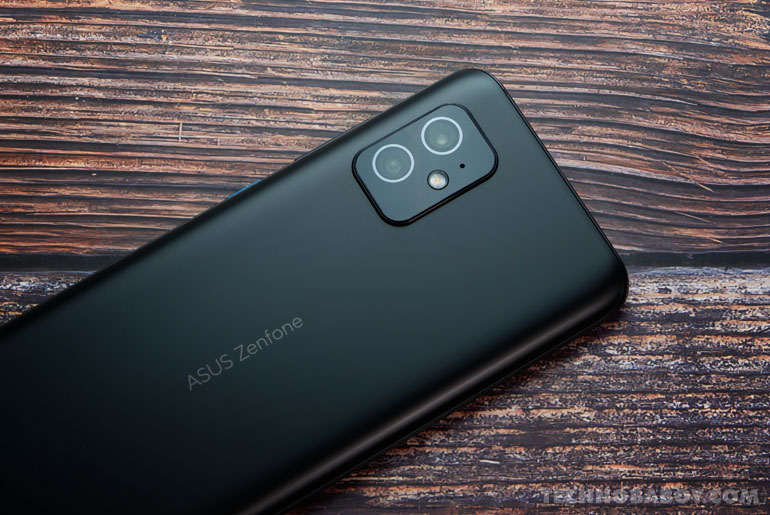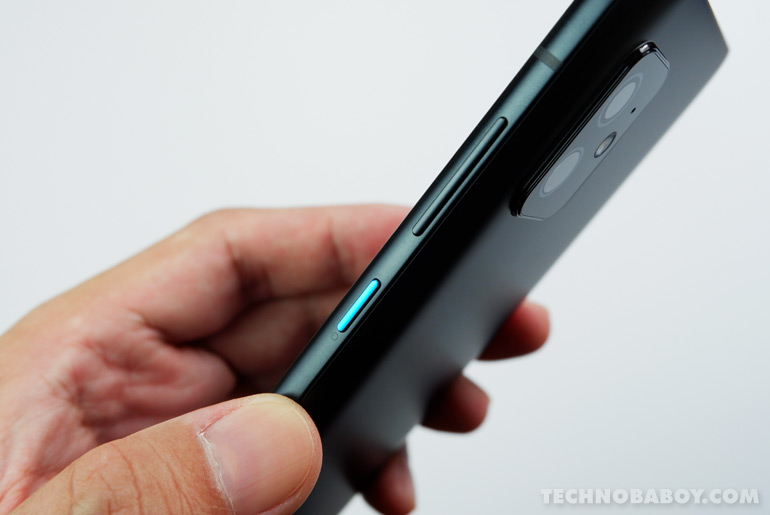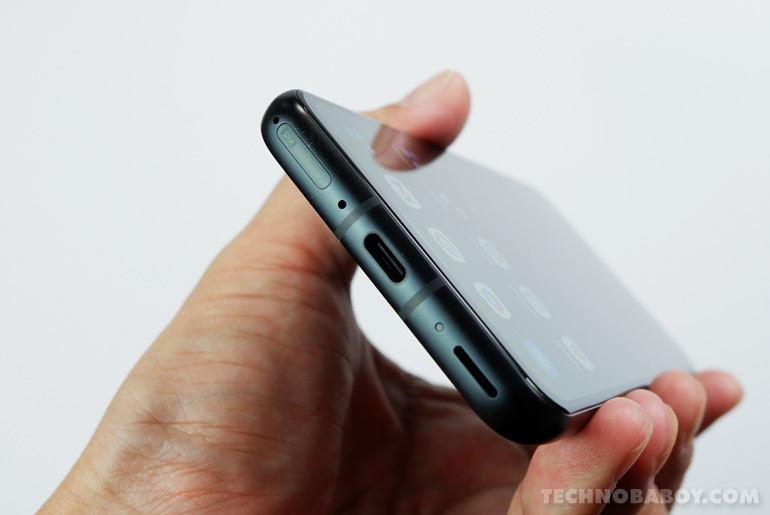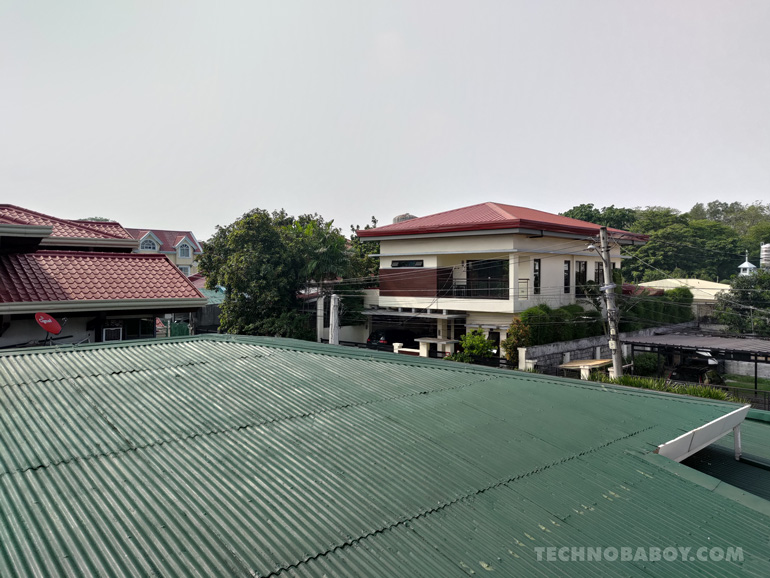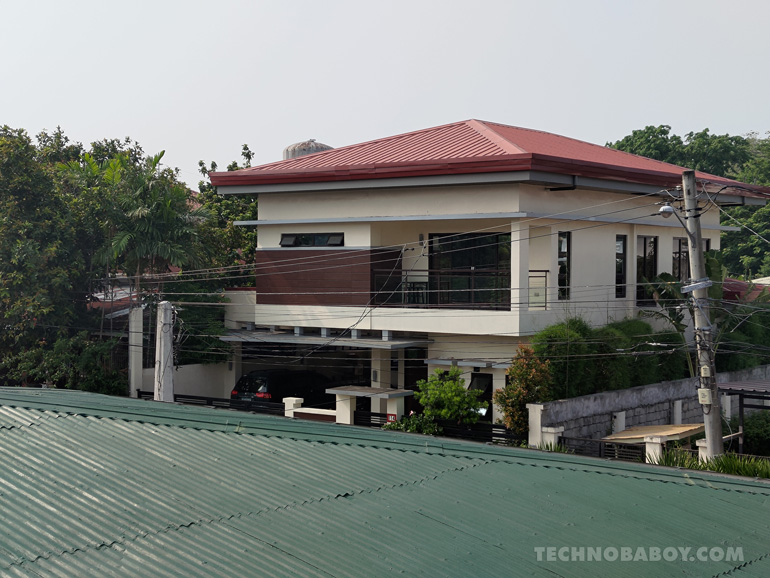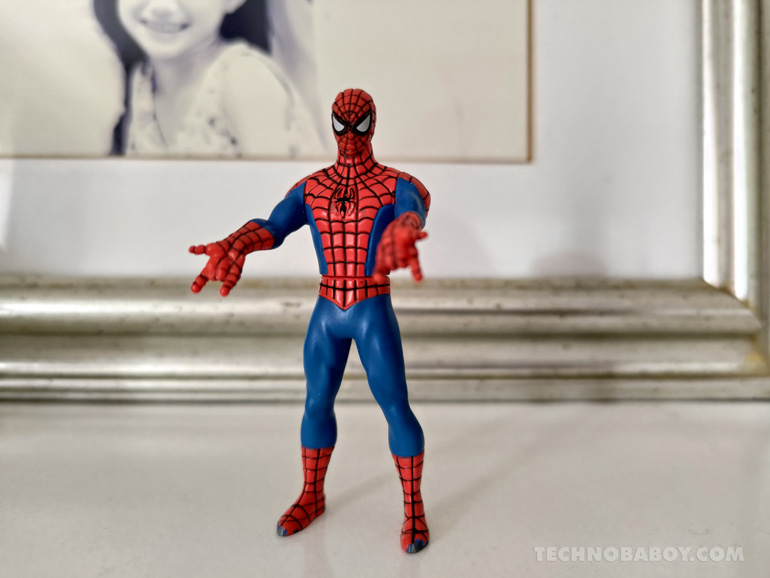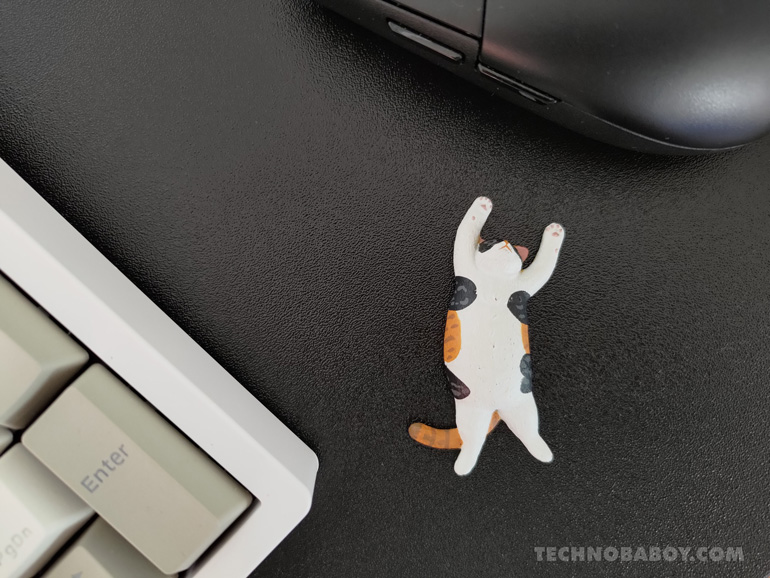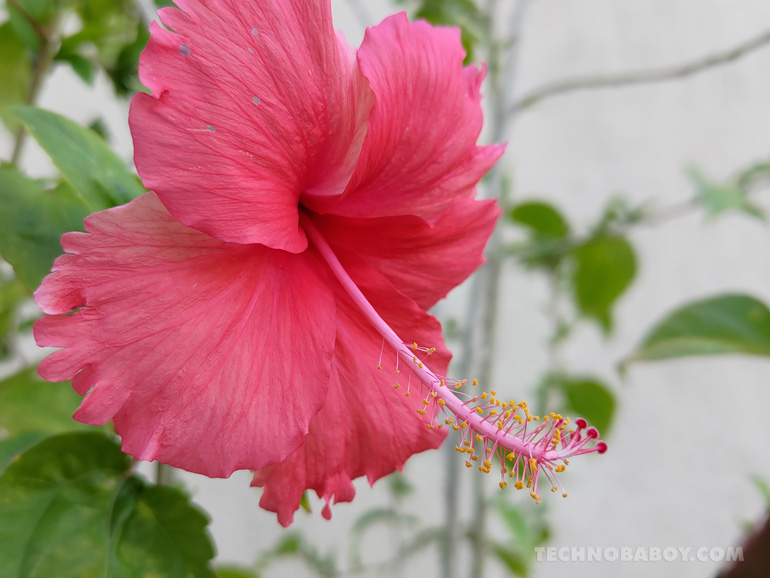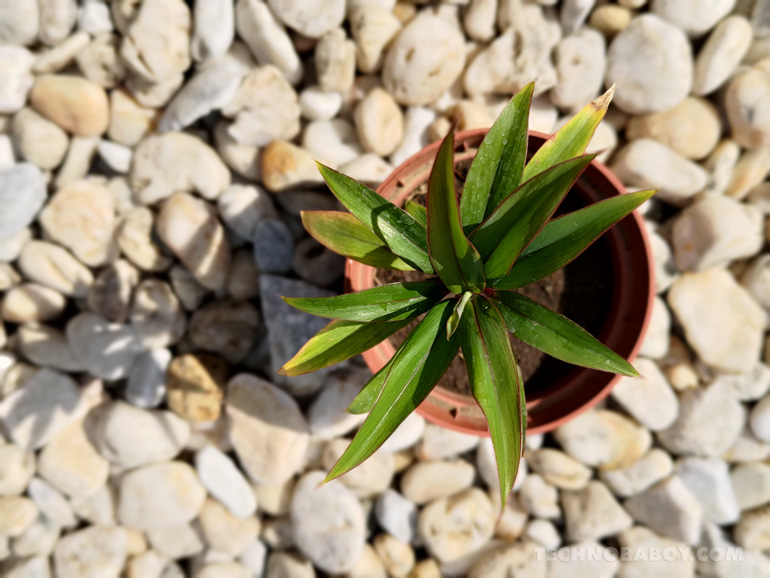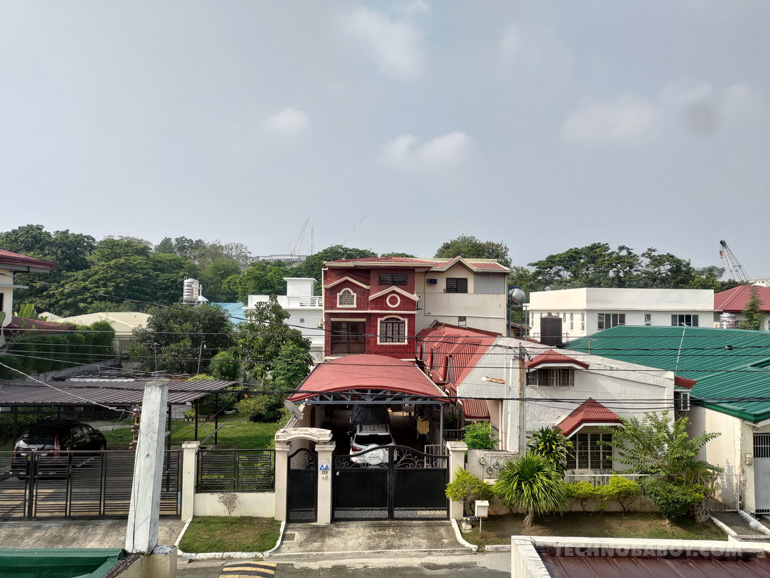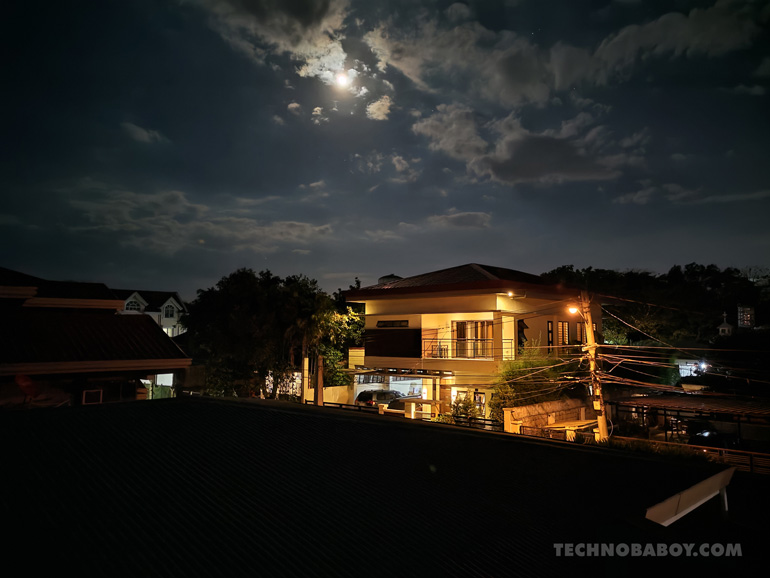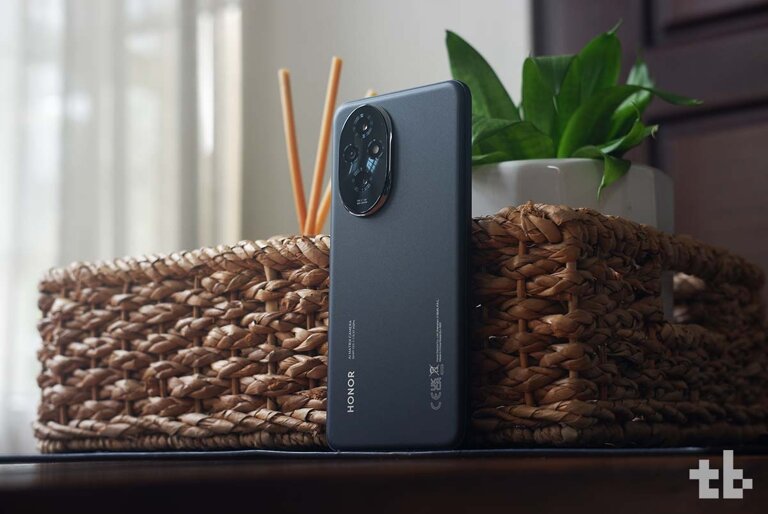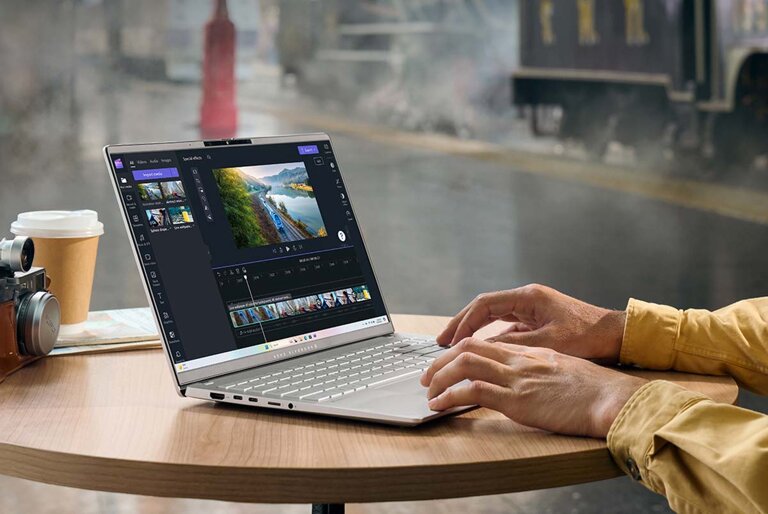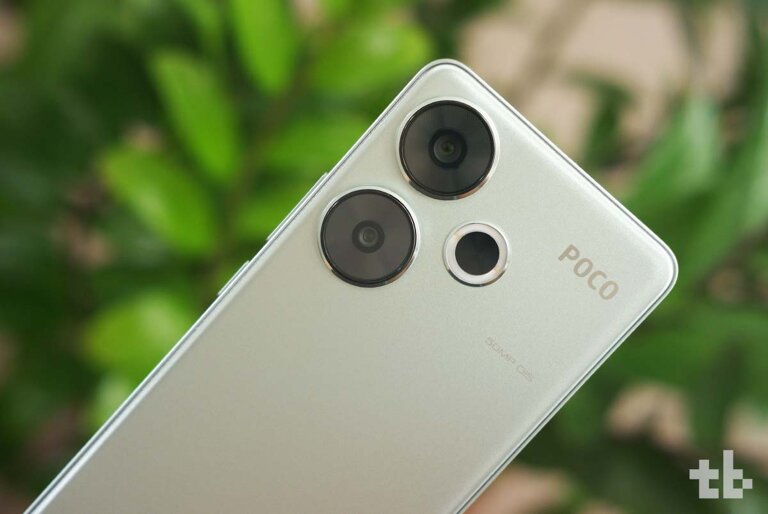We share our thoughts in this full review of the ASUS Zenfone 8.
Size is often seen as a barometer for performance. In the world of mobile phones, larger devices (Pro, Max, Pro Max, what have you) are marketed as better than their smaller counterparts.
But in the case of the ASUS Zenfone 8, that’s not simply the case. In fact, its size is actually its best feature. Armed with a Snapdragon 888 chip, a powerful set of cameras, and other premium features, it’s surprising what this compact phone is capable of.
But how well does it perform in real life? Well, it’s pretty good. So in this review, we’re going to tell you why we think the ASUS Zenfone 8 is such a great compact phone. Let’s get started.
Price and Availability
ASUS Zenfone 8 8GB + 128GB: Php 34,995
ASUS Zenfone 8 16GB + 256GB: Php 39,995
ASUS Zenfone 8 is now available with a starting price of Php 34,995 for the 8GB + 128GB model and Php 39,995 for the 16GB + 256GB model. You can find it in official ASUS Concept Stores, and accredited online and offline shops.
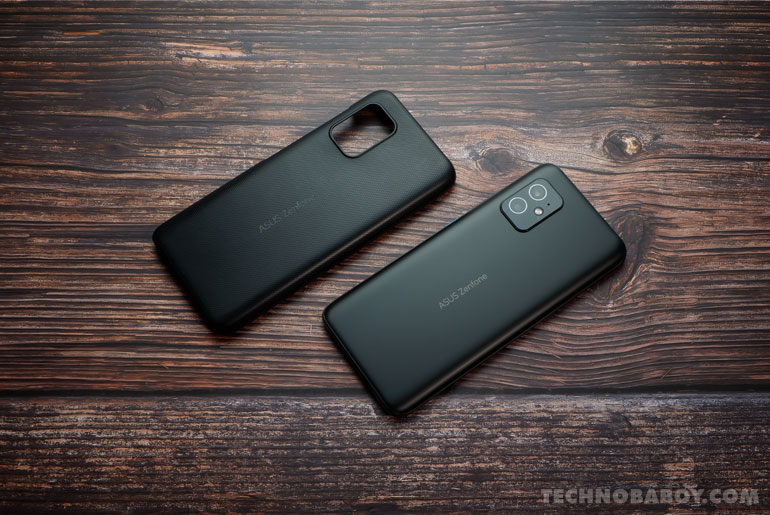
In the box:
- ASUS Zenfone 8
- Hard Shell Back Case
- 30W Charger
- USB-C Cable
- Documentation
Design and Display
The Zenfone 8’s most charming feature is its size. The handset measures 148 x 68.5 x 8.9 mm with a 5.9-inch display. Compared to most phones you see in the market, that’s quite tiny. It has similar dimensions to the iPhone 12, but narrower which further emphasizes its compact profile.
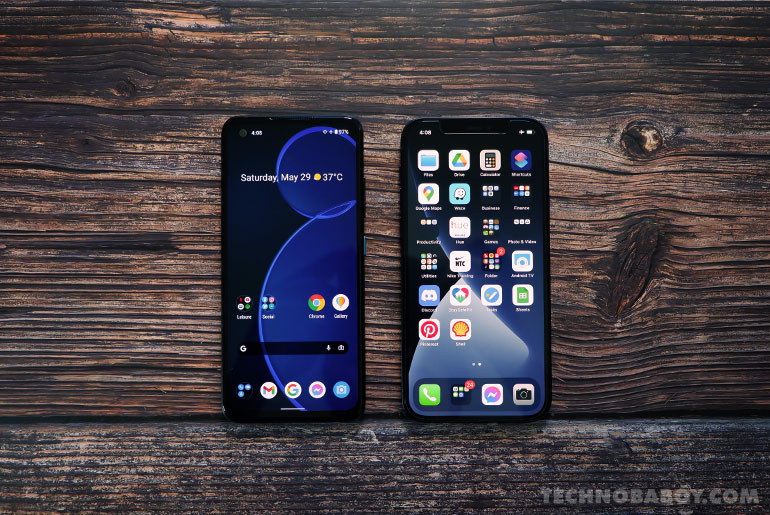
The phone doesn’t break any barriers when it comes to design, but it’s aesthetically pleasing. Clean, sleek lines dictate its overall look.
The back has a smooth glass panel with a matte finish and a camera module with two huge lenses on the left. It slopes to the sides, making the phone easier to grip. It feels good in the hand as well.
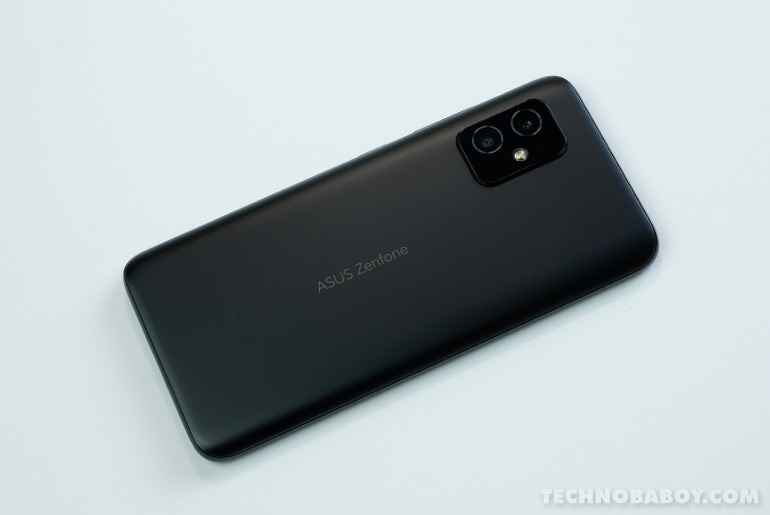
The display is flat, which is ideal for a compact phone because it maximizes the screen size. I personally like flat displays because I don’t like the color banding effect you see on curved displays.
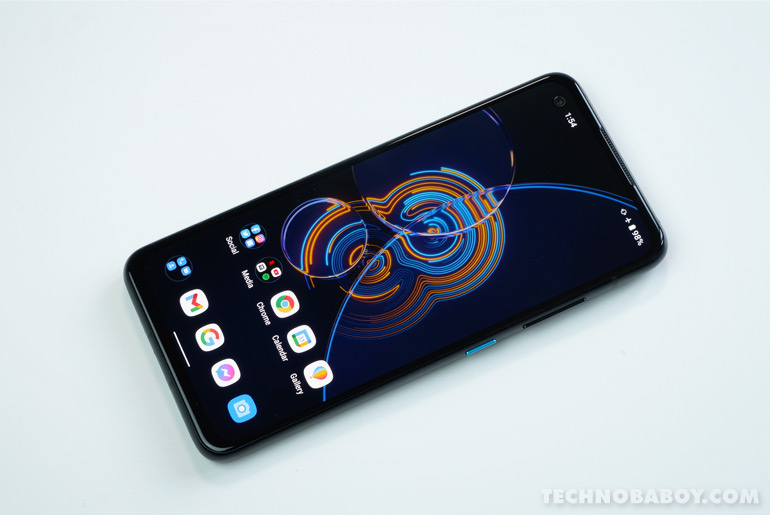
On the right side, you have the volume rocker and the power button with a metallic blue finish. At the bottom is the dual SIM tray, the mic, a USB-C port, an LED notification light (yes, it has one), and one of two speakers (more on this later). And at the top sits the headphone jack, a feature that I highly appreciate because I like using wired earphones (they sound better and costs less than wireless ones).
The Zenfone 8 has a Samsung-made 5.9-inch AMOLED display with Corning Gorilla Glass Victus on top. It has an ultra-smooth 120Hz refresh rate and a 240Hz touch report rate with a 1ms response time.
The screen is plenty bright, even outdoors. It comes with a 112% DCI-P3 color gamut, and an industry-leading Delta-E < 1 color accuracy that brings videos and images to life. What’s more, it also has HDR10+ certification for more detail in dark scenes.
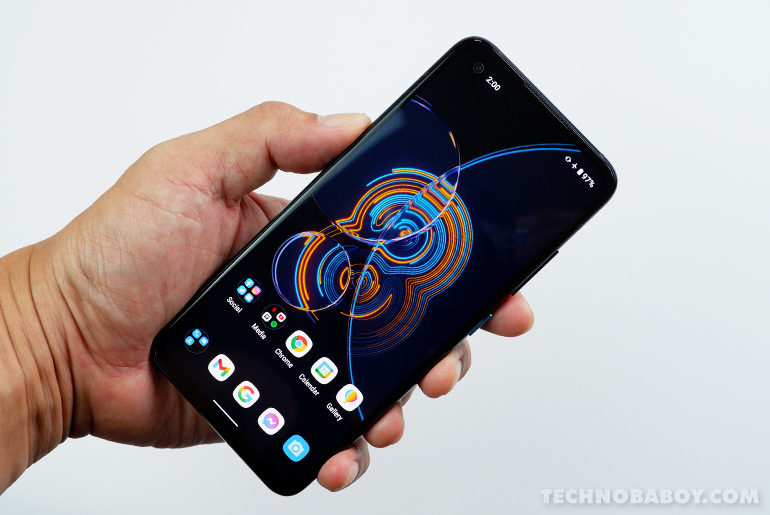
The phone comes with two speakers — one at the bottom with the earpiece doing double duty as the other one. The stereo speakers are driven by two audio amplifiers. ASUS also collaborated with Dirac to optimized sound.
The result is an amazing pair which sound surprisingly good. For a phone, the bass is fuller than most devices and the quality is cleaner and more detailed.
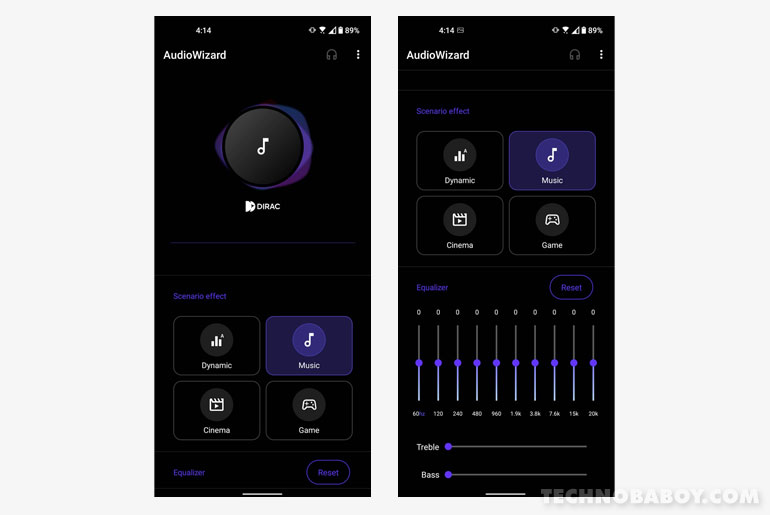
I feel the Zenfone 8’s UI also deserves some praise here. Based on Android 11, it is clean and straightforward with a look that’s close to stock. What’s more, it is highly customizable too. You can change icon styles, colors, folder themes, scroll effects, and more.
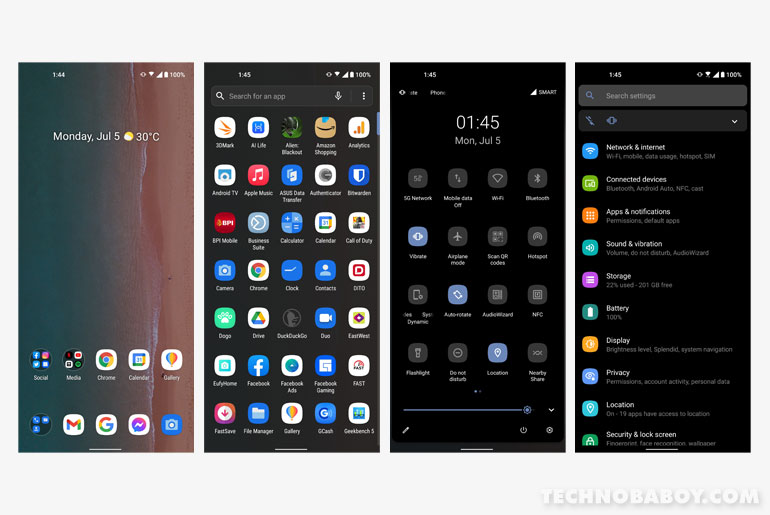
Performance and Battery
The Zenfone 8 is powered by Qualcomm’s flagship Snapdragon 888 chipset. Suffice to say, it can run anything game or app thrown at it with ease. Coupled with the 120Hz refresh rate, animations run smooth and snappy.
Here are some benchmark scores. I ran the tests on High Performance mode and on Dynamic mode (which is its default mode).
- 3D Mark Wild Life Extreme (High Performance): 1502
- 3D Mark Wild Life Extreme (Dynamic): 1332
- 3D Mark Sling Shot Extreme (High Performance): Maxed out
- 3D Mark Sling Shot Extreme (Dynamic): 4,809
- Geekbench 5 (High Performance): 1104 (Single-core), 3548 (Multi-core)
- Geekbench 5 (Dynamic): 987 (Single-core), 3283(Multi-core)
When playing games, High Performance mode works best. I know it sounds obvious, but it has extra features apart from just boosting performance. In this mode, 120Hz refresh rate will be forced on all games that support it. It also activates HyperFusion, which integrates mobile data and Wi-Fi connection to stabilize your internet during gameplay, and Dual-band Wi-Fi mode which simultaneously uses both 2.4GHz and 5GHz Wi-Fi networks to maximize network stability and bandwidth.
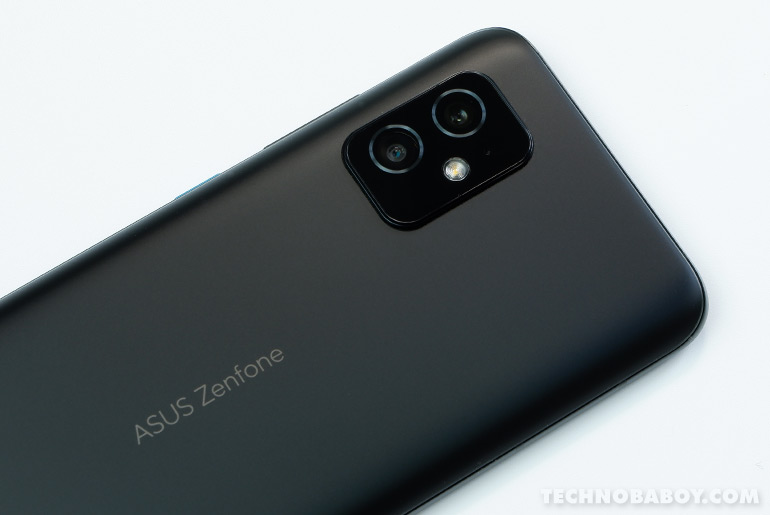
Since the Zenfone 8 isn’t exactly paper-thin, ASUS was able to fit a 4000mAh battery on its compact frame. Coupled with the AMOLED display, battery life is really good. The phone lasts a whole workday with the refresh rate on auto and battery mode on Dynamic.
ALSO READ: ASUS ZenBook 14 UX435EG review
Light users will be able to get more out of the battery. And, of course, setting the refresh rate to 120Hz or running it on High Performance mode will have a negative impact on battery life.
Charging to full takes around an hour via the 30W charger supplied in the box. There’s no wireless charging, mind you. But I don’t mind. Charging wirelessly takes longer to complete and it heats up devices in some cases.
Cameras
The Zenfone 8 has three cameras in total — a 64MP main and a 12MP ultra-wide at the back, and a 12MP selfie camera at the front.
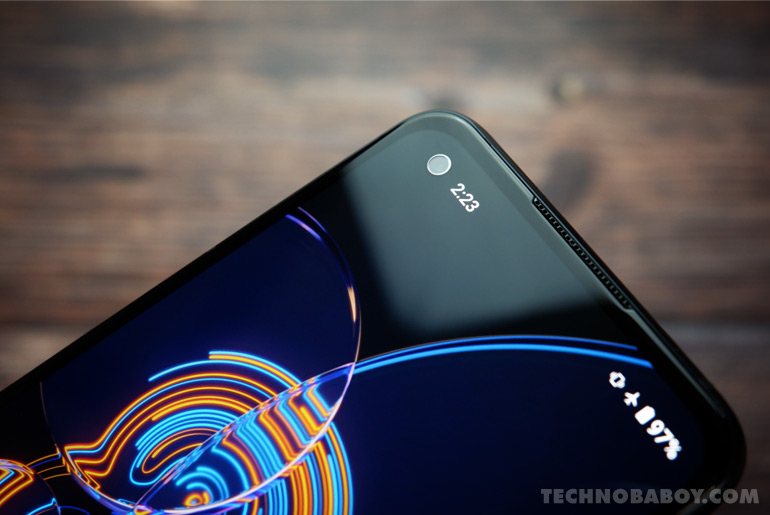
The main camera has a 1/1.7-inch Sony IMX686 sensor with an F/1.8 aperture lens and optical image stabilization, and uses Quad Bayer technology to output 16MP photos.
The ultra-wide camera, on the other hand, has a Sony IMX363 sensor and doubles as a 4cm macro camera. And finally, the selfie camera has Sony IMX663 sensor with autofocus.
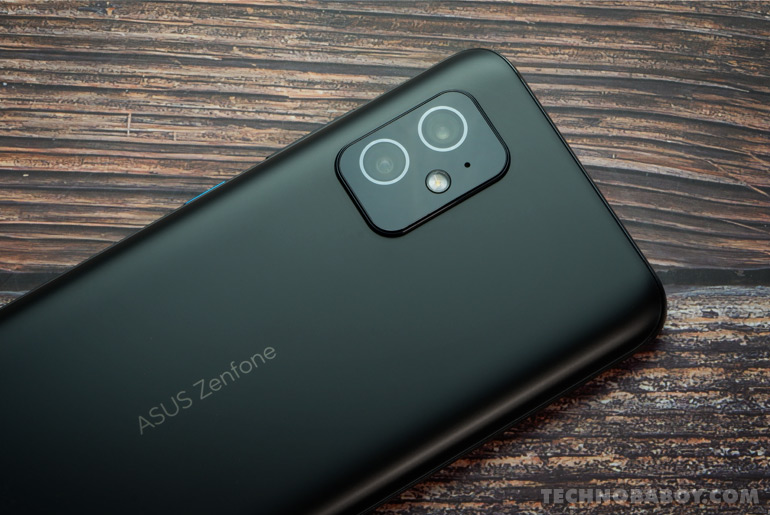
There’s no telephoto lens, but you do get a 2x lossless zoom via a 64MP crop. And for video, the phone can capture 8K@24fps, 4K@60fps, and 4K@30fps.
Camera performance is impressive. The photos are definitely more than enough for the occasional post on Facebook and Instagram.
In good light, the cameras perform very well. Photos are crisp and sharp, with good colors, white balance, and dynamic range. Photos taken on night mode are good as well. You get plenty of detail with good color saturation.
Selfies taken with the 12MP camera are pretty good. Skin tone is accurate with excellent detail. It also has a beauty mode, which you can adjust to suit your taste. It mostly just smoothens and lightens the skin.
Conclusion
ASUS has been relatively quiet in the smartphone space, gaining recognition mostly for its ROG gaming phone line. But I feel that should change with the ASUS Zenfone 8. It’s a great phone with top-of-the-line specs, including 5G, a Snapdragon 888, powerful cameras, and an exceptional display.
A true flagship, I highly recommend the Zenfone 8 if you’re on the market for a flagship. It’s a great option for those who want a smaller, more manageable device without compromising performance. The fact that it’s starts at only Php 34,995 is icing on the cake.
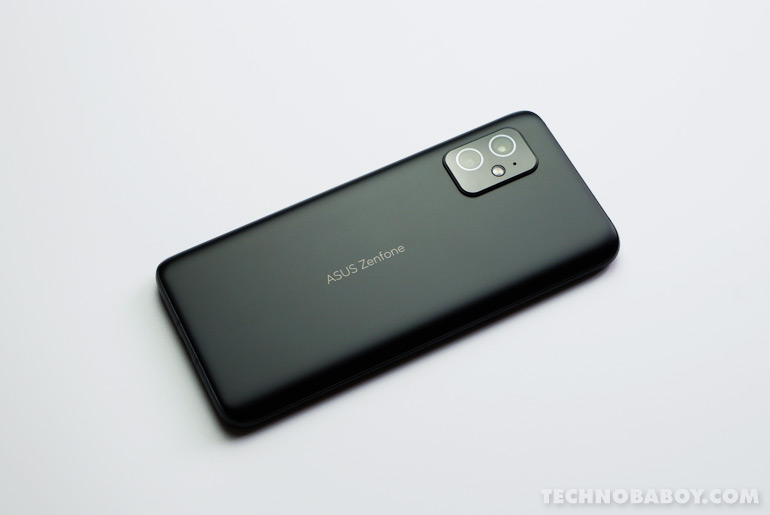
ASUS Zenfone 8 specs
- Display: 5.9-inch Super AMOLED Display, 2400 x 1080, 120Hz Refresh Rate, Corning Gorilla Glass Victus, HDR10+, 112% DCI-P3, 107% NTSC, 151.9 sRGB
- Processor: Qualcomm Snapdragon 888 5G
- RAM: 8GB/12GB RAM
- Storage: 128GB/256GB UFS 3.1 Storage
- Rear Cameras: 64MP Main, Sony IMX686 + 12MP Ultra-wide, Sony IMX363, Dual Cameras
- Front Camera: 12MP Selfie Camera, Dual Pixel Sensor
- Network: 5G, 4G LTE, Dual SIM
- Connectivity: Wi-Fi 6e, Bluetooth 5.2, GPS
- Others: In-display Fingerprint Scanner, USB-C, Dual Speakers with Dirac HD Sound, FM Radio
- OS: ZenUI 8, Android 11
- Battery: 4000mAh Battery, 30W Quick Charge

